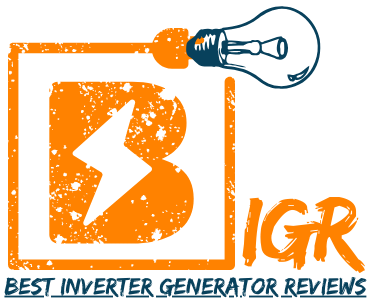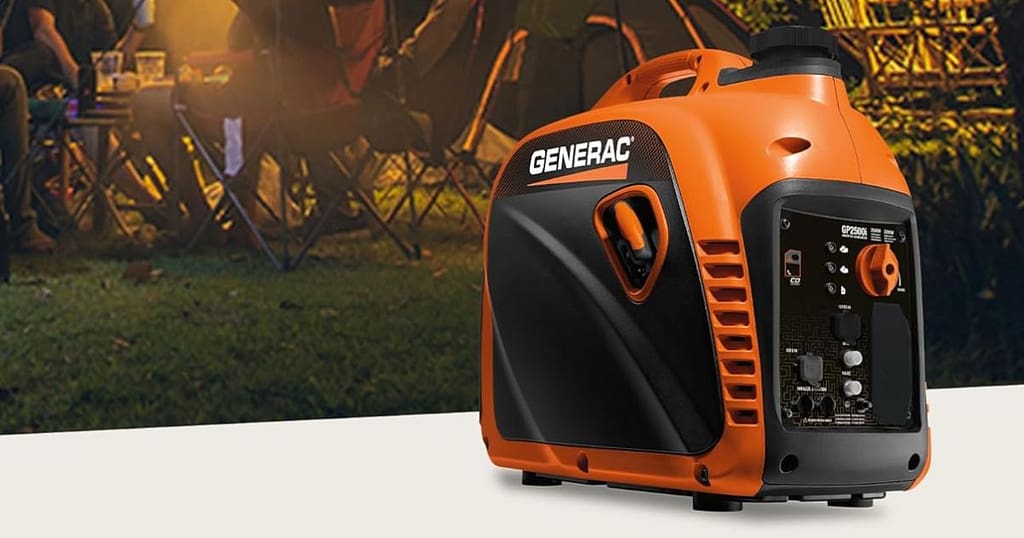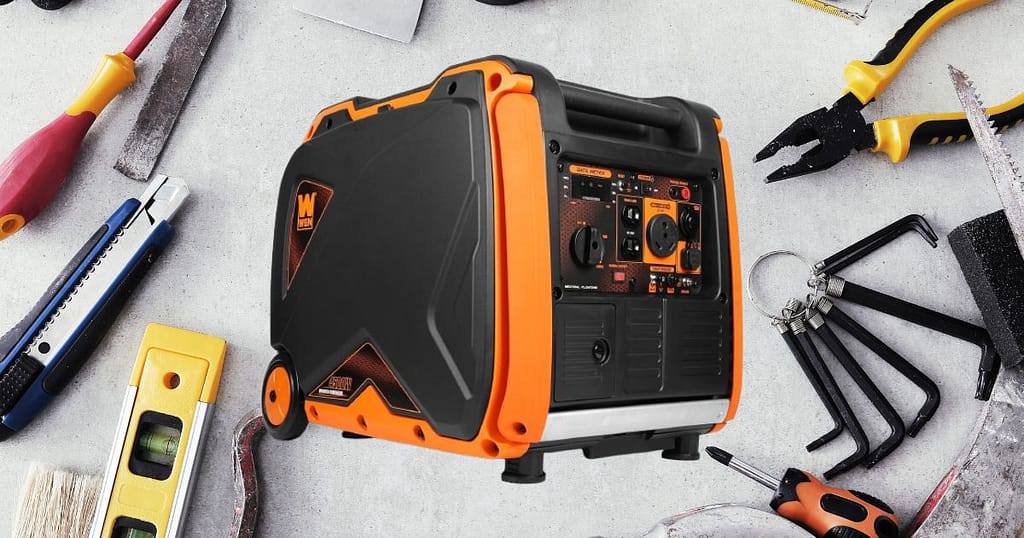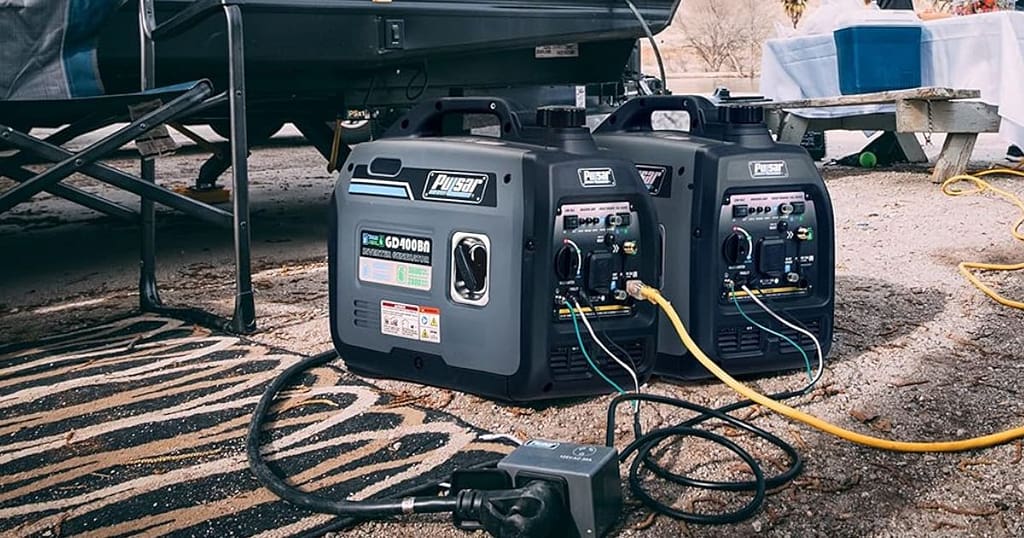
A 5000-watt generator is a versatile power source that can be a lifesaver during power outages or when you need electricity in remote locations. But what can you run on a 5000-watt generator? In this comprehensive guide, we will delve deep into the capabilities of a 5k watt machine and explore the wide range of appliances and equipment you can power with it. Understanding your generator’s capacity and the specific requirements of your devices is crucial for safe and efficient operation.
What I can run on 5000-Watt Generator?
Understanding Generator Capacity:
Before we discuss what you can power with a 5000-watt generator, it’s essential to understand the concept of generator capacity. The generator’s capacity, often measured in watts, determines how much electrical load it can handle. In the case of a 5000-watt generator, it can produce a continuous power output of 5000 watts. However, you must consider both continuous and surge power requirements for the devices you want to connect.
Common Appliances and Their Power Requirements
1. Refrigerator: A typical refrigerator consumes around 800-1500 watts while running and may need more power when starting. A 5000-watt generator can easily handle this.
2. Air Conditioner: A small window air conditioner may require around 1200-2000 watts, while a central air unit can use 3500-6000 watts. A 5000-watt generator can run smaller units, but larger ones may exceed its capacity.
3. Lights: Lighting is relatively low-power, with LED bulbs using about 8-12 watts each. You can power numerous lights with a 5000-watt generator.
4. Microwave: A microwave typically requires 1000-1500 watts. You can use your generator to prepare meals during a power outage.
5. Space Heaters: Space heaters vary in power consumption, but most are within the 1000-1500 watt range, making them suitable for a 5000-watt generator.
6. Electric Water Heater: Water heaters are power-hungry appliances, often needing 4000-6000 watts or more. A 5000-watt generator might not be enough for a water heater and other devices simultaneously.
7. Power Tools: Most power tools have wattage ratings printed on them. A 5000-watt generator can run various power tools for DIY projects or emergency repairs.
8. Sump Pump: Sump pumps generally require 600-900 watts, making them a good match for a 5000-watt generator.
Safety Considerations
While a 5000-watt generator can power a variety of appliances and equipment, it’s crucial to operate it safely.
- Calculate your power needs carefully to avoid overloading the generator.
- Use extension cords that can handle the load without overheating.
- Never operate the generator indoors; ensure proper ventilation to prevent carbon monoxide poisoning.
- Follow the manufacturer’s maintenance guidelines for optimal performance.
- Invest in a transfer switch to connect the generator to your home’s electrical system safely.
How to Extend the Runtime of Your 5000-Watt Generator
A 5000-watt generator is a valuable asset during power outages and remote adventures, but its runtime can be a critical factor, especially in emergency situations. Maximizing the duration your generator can provide power is essential for ensuring you have electricity when you need it most. In this guide, we’ll explore tips and strategies to extend the runtime of your 5000-watt generator, covering fuel efficiency, load management, and other factors that can make a significant difference.
1. Choose the Right Fuel Type:
The type of fuel your generator uses plays a significant role in runtime. Gasoline, propane, and diesel are common options. Diesel generators, for example, tend to be more fuel-efficient and offer longer runtimes compared to gasoline generators.
2. Use Fuel Stabilizers:
To maintain the quality of the fuel in your generator’s tank, add fuel stabilizers. Stabilized fuel burns more efficiently and reduces the risk of clogs in the carburetor, ensuring your generator runs smoothly.
3. Regular Maintenance:
Keeping your generator in top shape through regular maintenance is essential. Clean or replace air filters, change the oil, and inspect spark plugs according to the manufacturer’s recommendations. A well-maintained generator runs more efficiently.
4. Load Management:
Proper load management is crucial. Avoid overloading your generator, as this can cause it to run less efficiently and potentially damage sensitive electronics. Prioritize essential appliances and equipment to optimize runtime.
5. Invest in Energy-Efficient Appliances:
Energy-efficient appliances consume less power, allowing your generator to run longer. When possible, choose appliances with the Energy Star label or low wattage options.
6. Insulate Your Space:
In cold weather, insulating your space can help retain heat, reducing the need for electric heating devices. In hot weather, insulating can minimize the use of air conditioning.
7. Smart Usage Patterns:
Consider running your generator in cycles rather than continuously. Turn it off when not needed, and use power-saving modes on devices to reduce overall consumption.
8. Consider a Dual-Fuel Generator:
Dual-fuel generators can operate on both propane and gasoline, giving you flexibility in choosing the fuel source that’s more readily available or cost-effective.
9. Monitor Fuel Levels:
Keep a close eye on your fuel levels to avoid running out during an emergency. Having extra fuel on hand is a good practice.
10. Automatic Transfer Switch (ATS):
Installing an ATS can ensure that your generator only runs when necessary, automatically switching to utility power when it’s restored, thus conserving fuel.
Can I convert my gas powered 5000 watt generator into dual fuel generator?
Converting a gas-powered 5000-watt generator into a dual-fuel generator, capable of running on both gasoline and propane, is indeed possible, but it’s a project that requires careful consideration, technical knowledge, and some mechanical skills. The conversion process involves making modifications to the generator’s carburetor and fuel system to accommodate the use of propane as an alternative fuel source. Here’s a detailed explanation of the process:
1. Safety First:
Before attempting any conversion, it’s crucial to emphasize safety. Gasoline and propane are both highly flammable, and working with fuel systems can be hazardous. Ensure that you have the necessary safety equipment and knowledge to handle these fuels safely.
2. Check Generator Compatibility:
Not all generators are suitable for conversion. Check your generator’s specifications and user manual to see if it’s compatible with dual-fuel conversion. Some generators come with conversion kits or are explicitly designed for dual-fuel operation.
3. Gather the Conversion Kit:
To convert your generator, you’ll need a dual-fuel conversion kit. These kits typically include a bi-fuel carburetor, fuel regulator, necessary hoses, and fittings. Choose a reputable brand and ensure that the kit is compatible with your generator’s make and model.
4. Remove the Carburetor:
You’ll need to remove the existing gasoline-only carburetor from the generator. This is typically a delicate procedure, and it’s essential to take note of the carburetor’s settings and connections for reinstallation later.
5. Install the Bi-Fuel Carburetor:
To install a bi-fuel carburetor in place of the original carburetor, you should follow the specific instructions provided in the conversion kit. Each kit may have unique requirements and components, so it’s important to precisely follow the provided guidelines to ensure a successful conversion. Pay close attention to securing all connections, including fuel lines, vacuum hoses, and electrical connections, as they need to be both secure and correctly aligned to ensure the proper functioning of the bi-fuel system.
6. Connect the Fuel Regulator:
The conversion kit will include a fuel regulator that controls the flow of propane to the carburetor. Attach the regulator to the generator and connect it to the propane source, which can be a propane tank or cylinder.
7. Test the Dual-Fuel System:
After installation, conduct a series of tests to ensure that the generator can run on both gasoline and propane without issues. Pay attention to startup, performance, and any signs of fuel leakage.
8. Adjust Carburetor Settings:
You may need to adjust the carburetor settings to optimize the generator’s performance with propane. This can involve fine-tuning the air-fuel mixture to ensure efficient combustion.
9. Regular Maintenance:
Maintaining a dual-fuel generator is crucial. Keep the system clean, perform routine checks, and service the carburetor and fuel regulator as recommended by the manufacturer.
10. Safety Considerations:
Always store propane cylinders or tanks in a safe location away from direct sunlight, and follow proper safety protocols for handling propane.
It’s worth noting that converting your generator to dual-fuel may void its warranty, and it’s essential to consult the manufacturer’s guidelines to understand any implications. Additionally, if you are unsure about the conversion process, it’s advisable to seek assistance from a professional technician who specializes in generator modifications.
Lastly, while converting your generator to dual-fuel can provide increased flexibility and potentially cost savings, it should only be done if you are confident in your abilities and understand the potential risks associated with working with fuels and generator systems.
Conclusion
A 5000-watt generator offers a substantial power supply for a wide range of appliances and devices. Understanding its capacity and the power requirements of your equipment is essential for safe and efficient operation. By following safety guidelines and managing your power usage wisely, you can make the most of your generator during emergencies or remote adventures, ensuring you have the electricity you need when you need it.
FAQs
Q1: Can a 5000-watt generator run my central air conditioner?
A: It depends on the size and power requirements of your central air conditioner. This generator may run a smaller unit, but larger central air conditioners may require more wattage.
Q2: Is it safe to run sensitive electronics like computers on a 5000-watt generator?
A: Yes, but it’s essential to use surge protectors and voltage stabilizers to protect sensitive electronics from power fluctuations when running on a generator.
Q3: How long can a 5000-watt generator run continuously?
A: The runtime of this generator depends on factors like the fuel capacity and load. Generally, it can run for several hours on a full tank of fuel, but this varies.
Q4: Can I power my entire house with a 5000-watt generator during a power outage?
A: A generator 5k can power essential appliances and lights but may not be sufficient for an entire house, particularly if you have high-power appliances like electric water heaters or central air conditioning.
Q5: Can I use extension cords with a 5000-watt generator?
A: Yes, you can use extension cords to connect appliances to your generator. Ensure the cords are rated for the load and use them safely to prevent overheating or overloading.
Q6: What should I prioritize when deciding what to power during an outage with a 5000-watt generator?
A: Prioritize essential appliances like refrigerators, sump pumps, lights, and heating or cooling equipment, depending on the season, to ensure your basic needs are met.
7: Can I run multiple appliances simultaneously on a 5000-watt generator?
A: Yes, you can run multiple appliances, but you need to manage the load and ensure it stays within the generator’s capacity. Some devices may need to be prioritized.
Q8: Can I use a 5k-watt generator for outdoor events and recreational activities?
A: Absolutely! It is versatile and can power outdoor events, camping, tailgating, and various recreational activities, providing the necessary electricity.




